
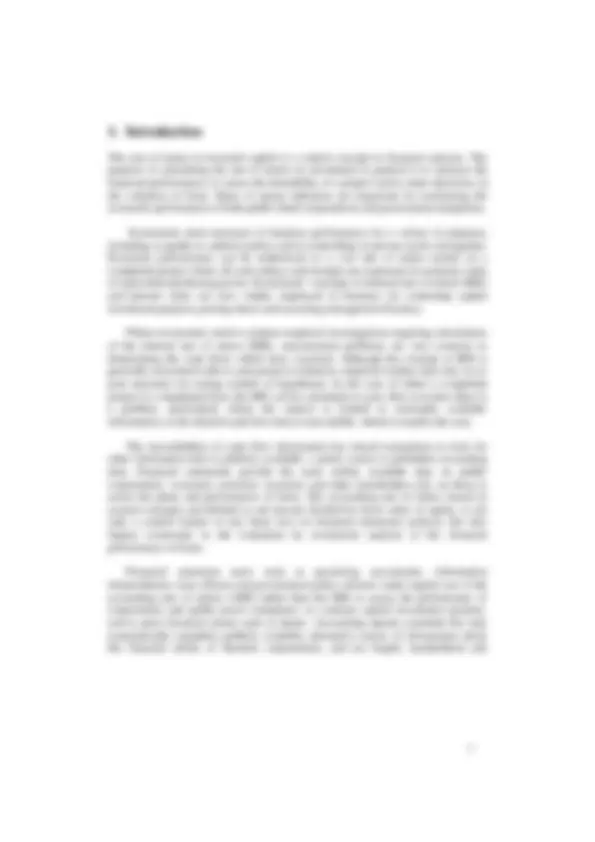
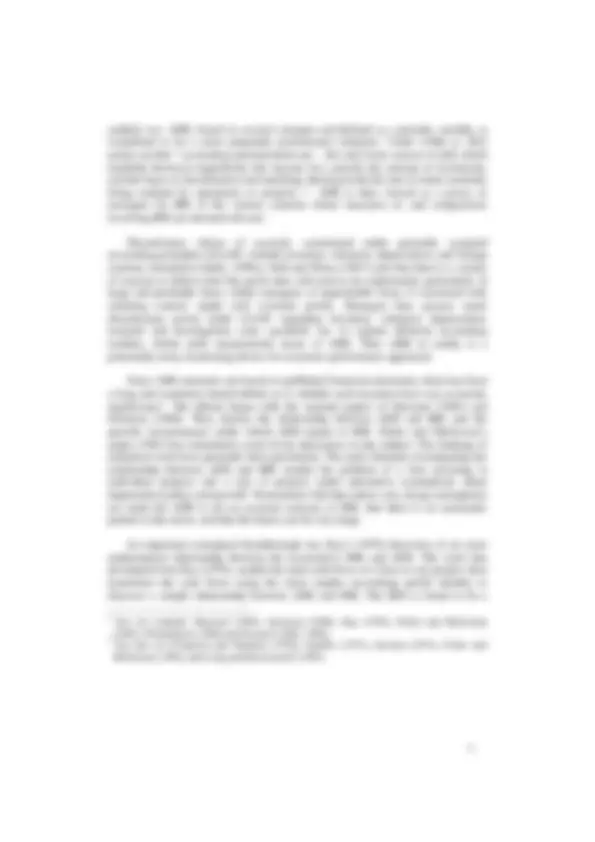
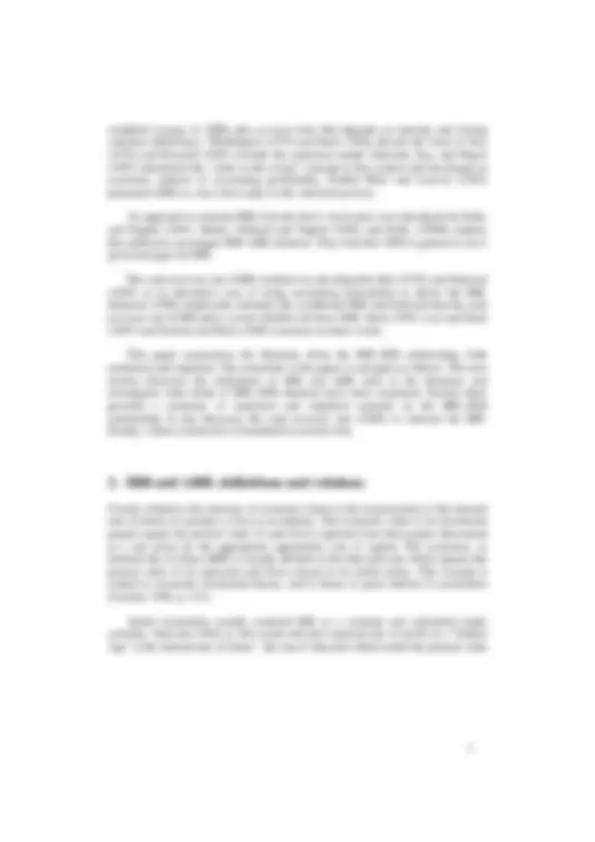
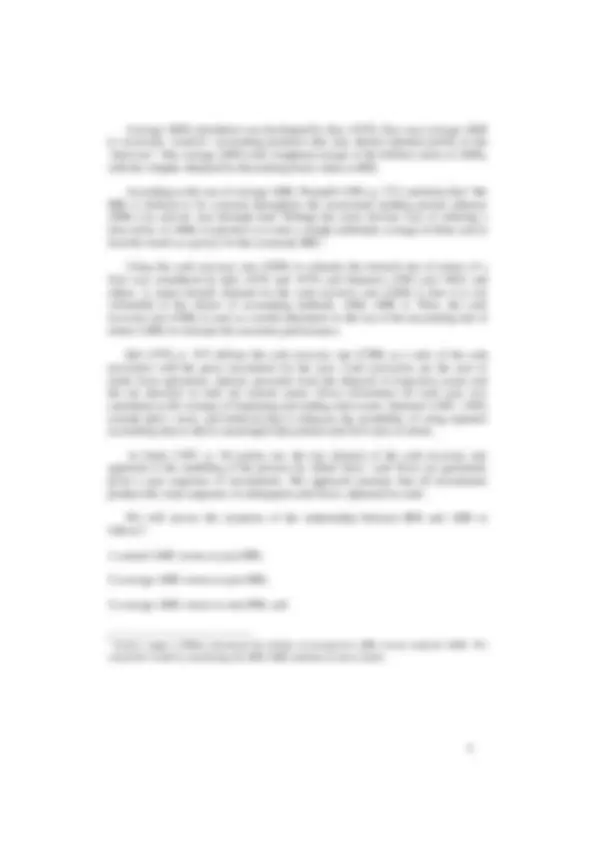
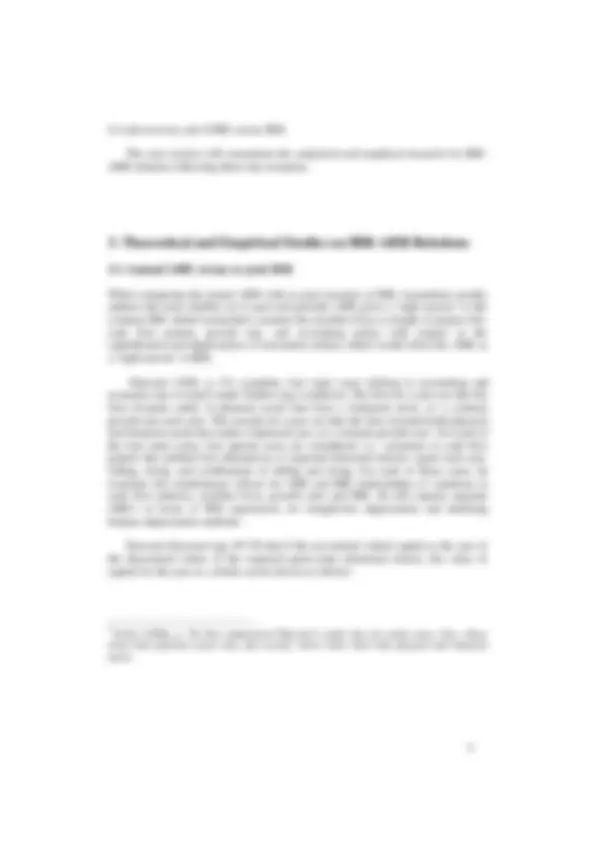
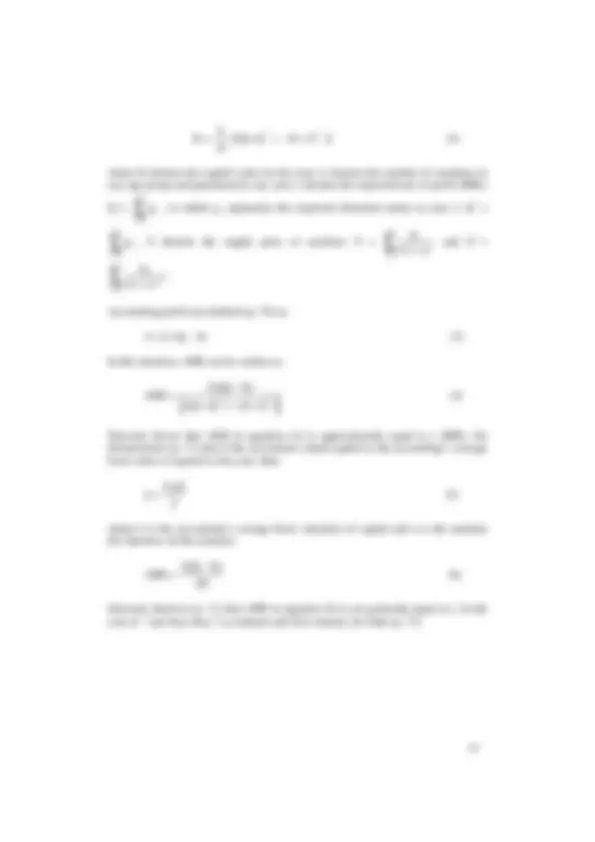
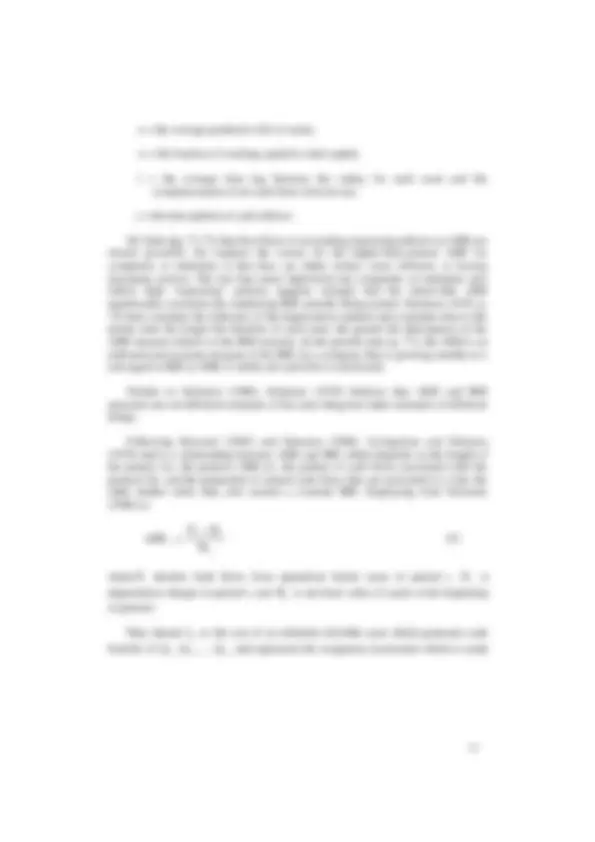
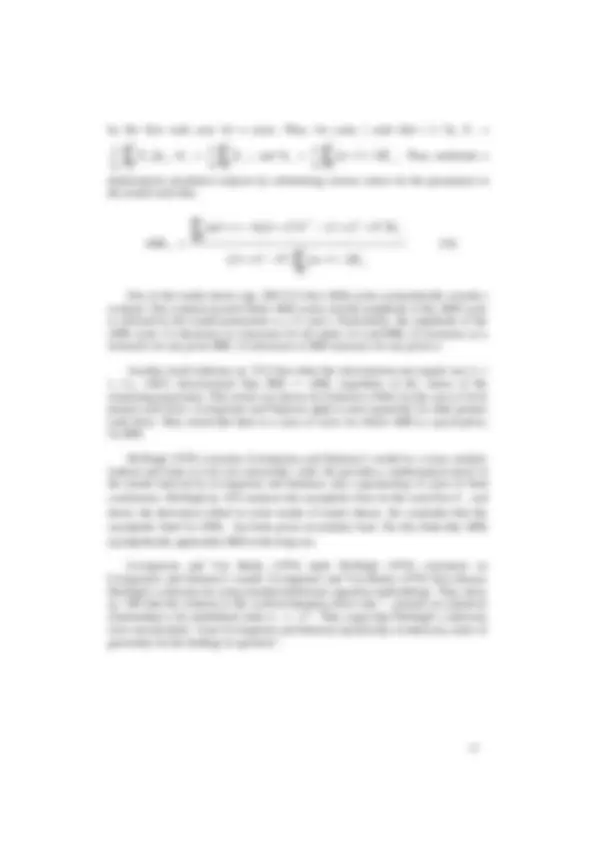
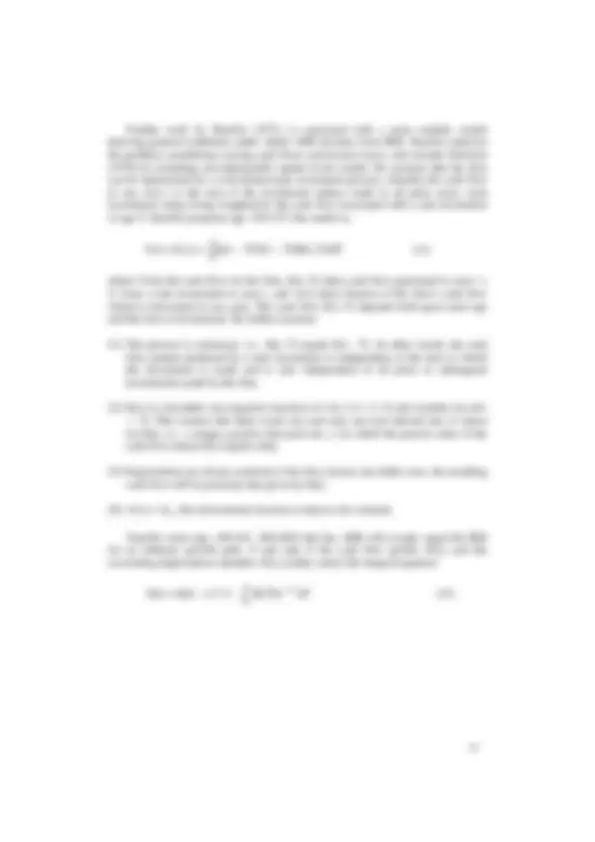
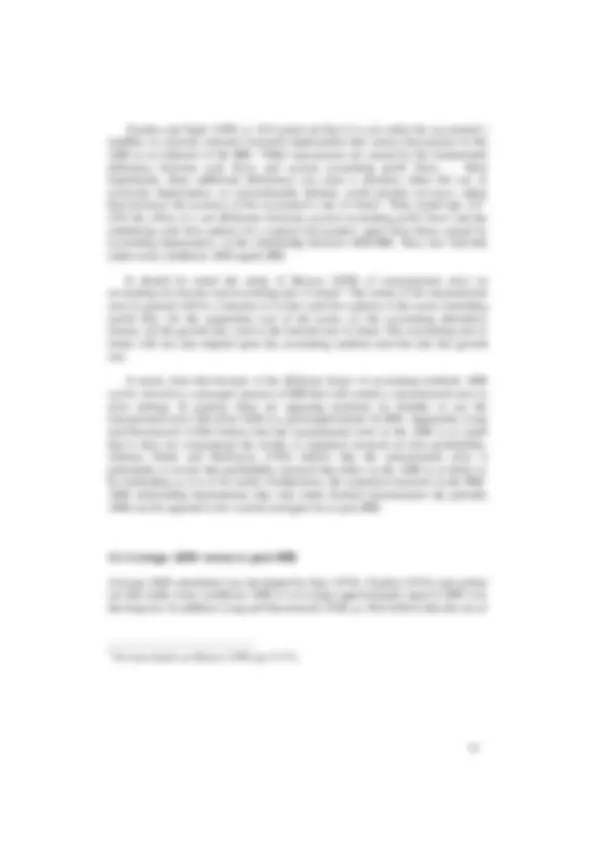
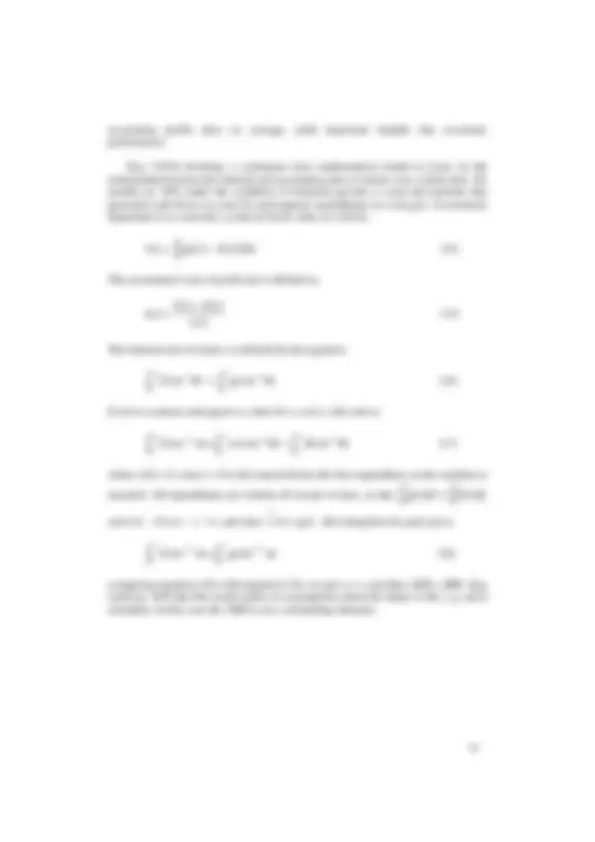
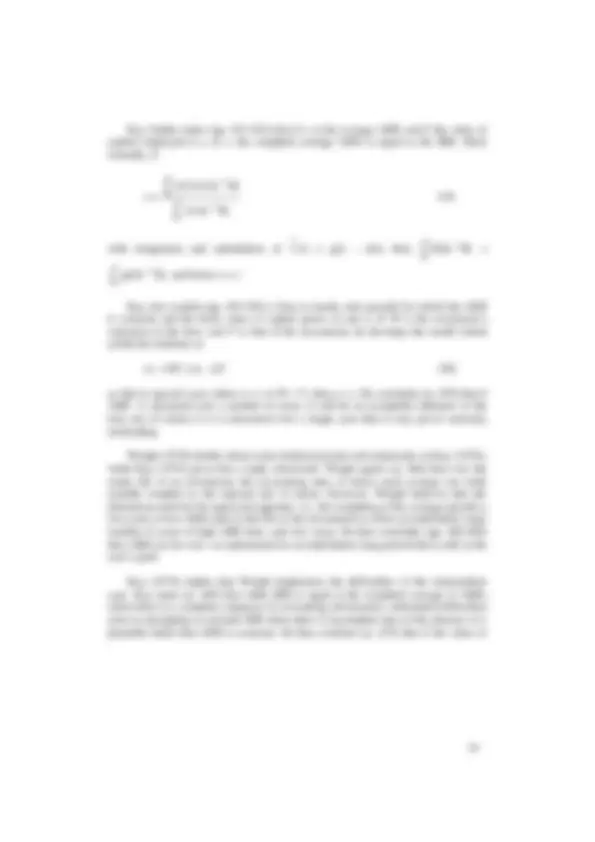
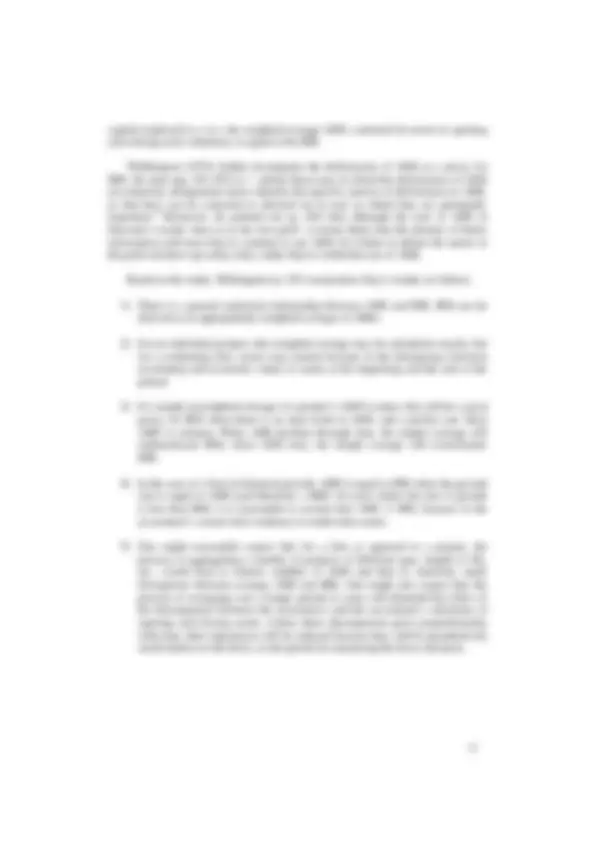
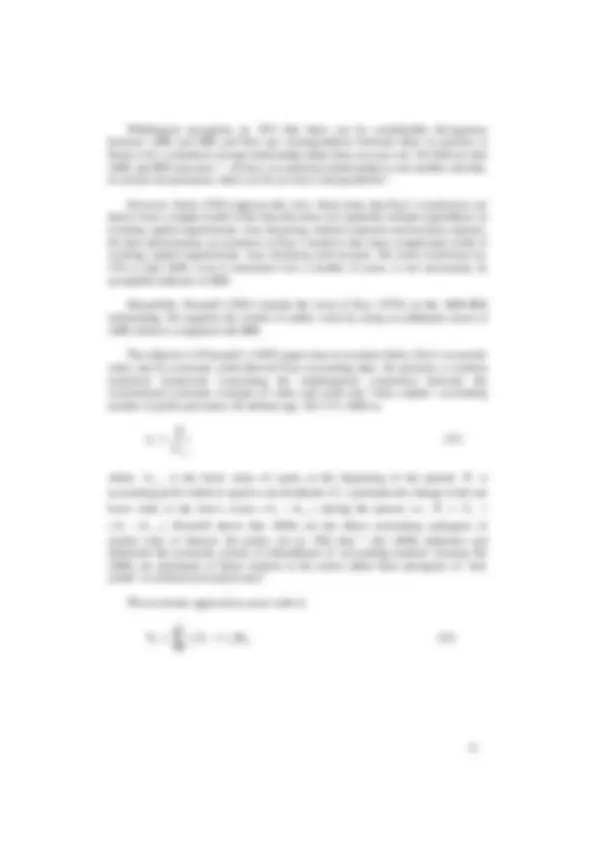
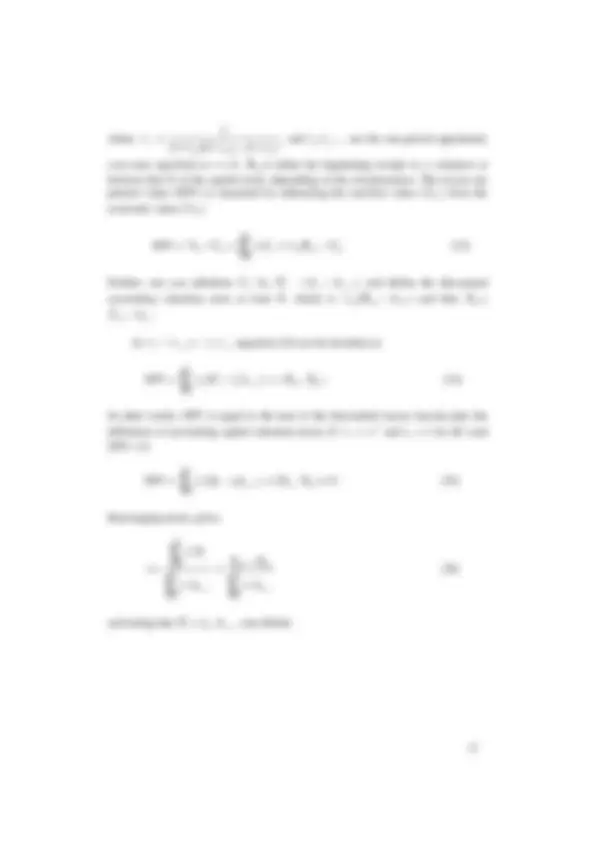
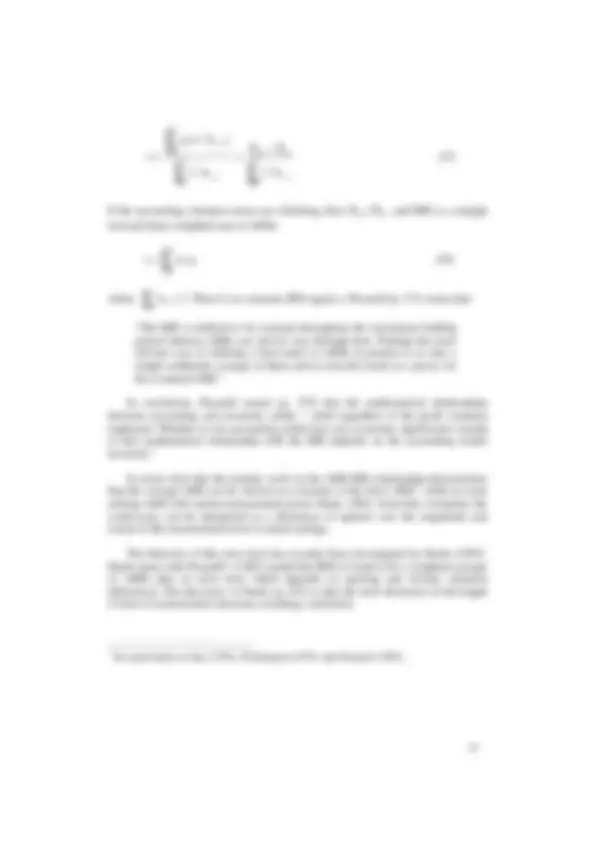
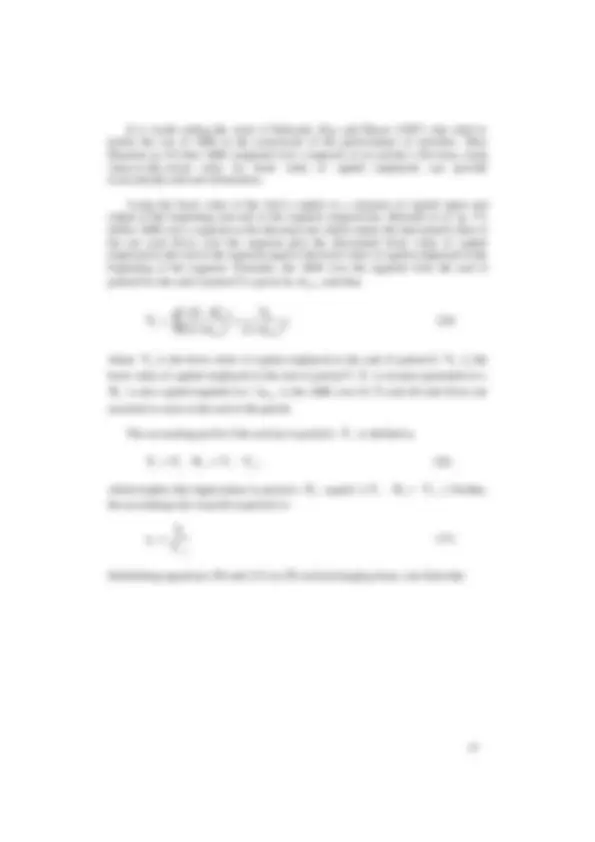
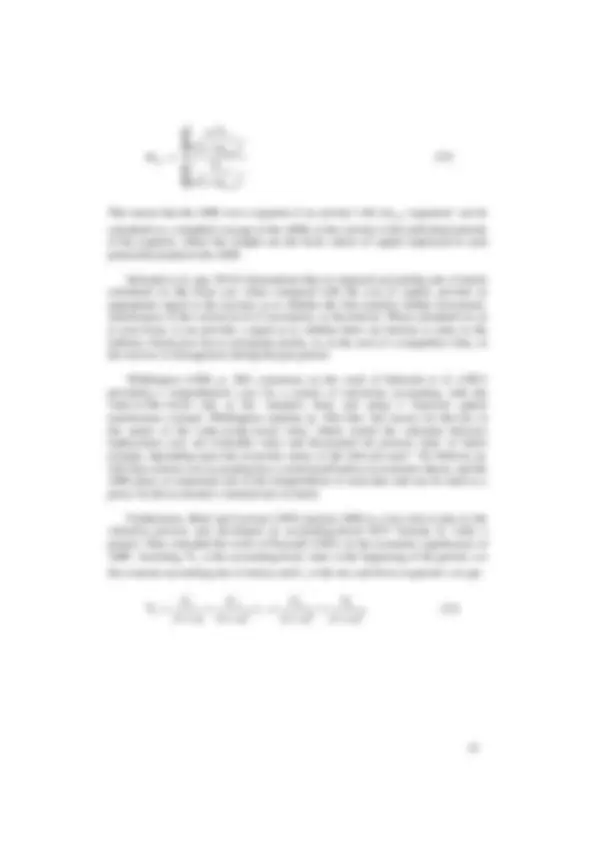
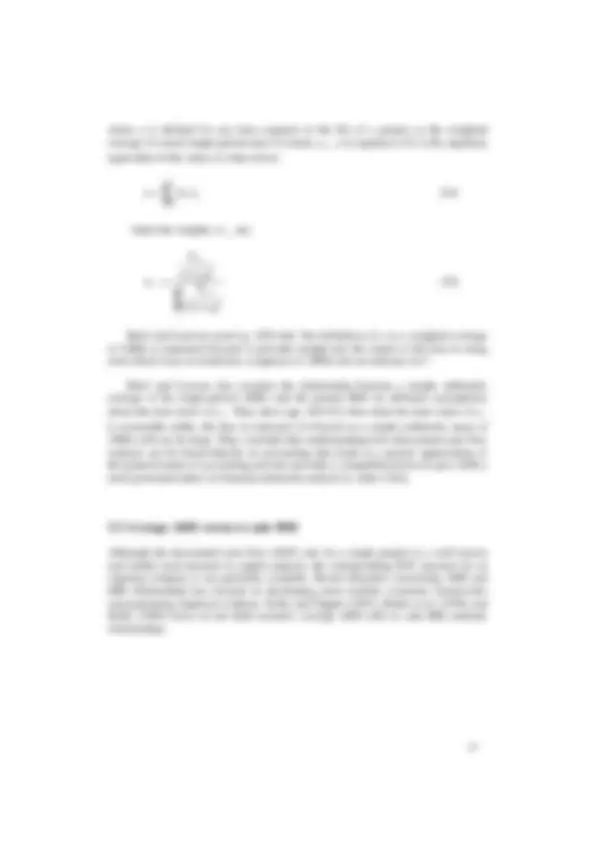
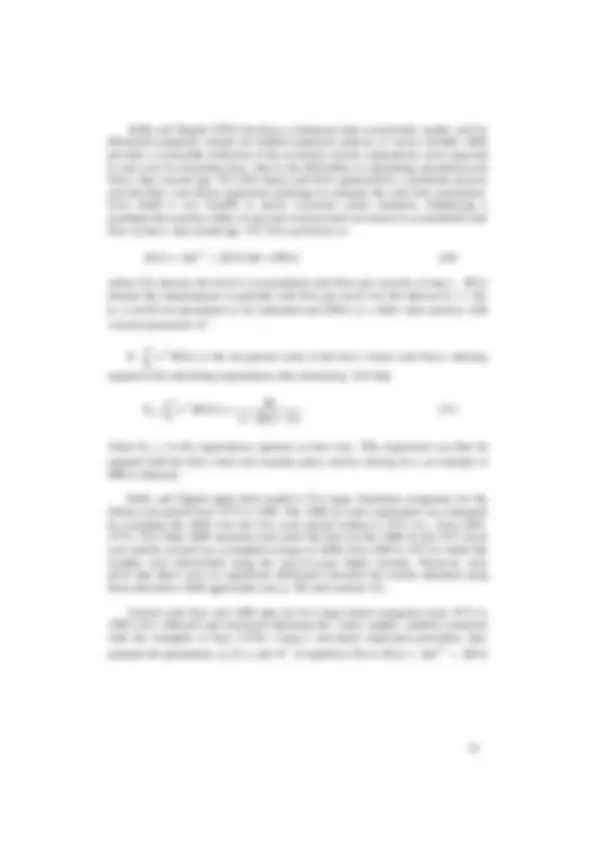
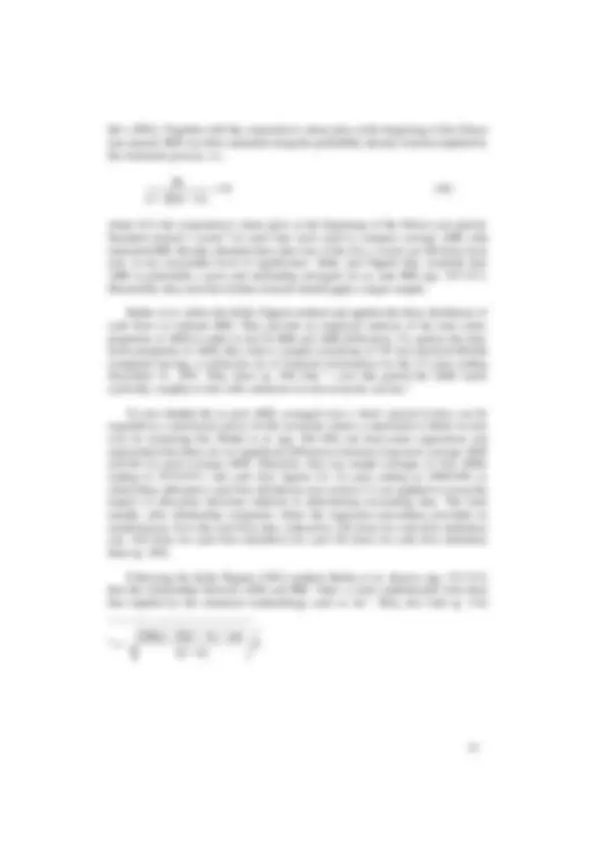

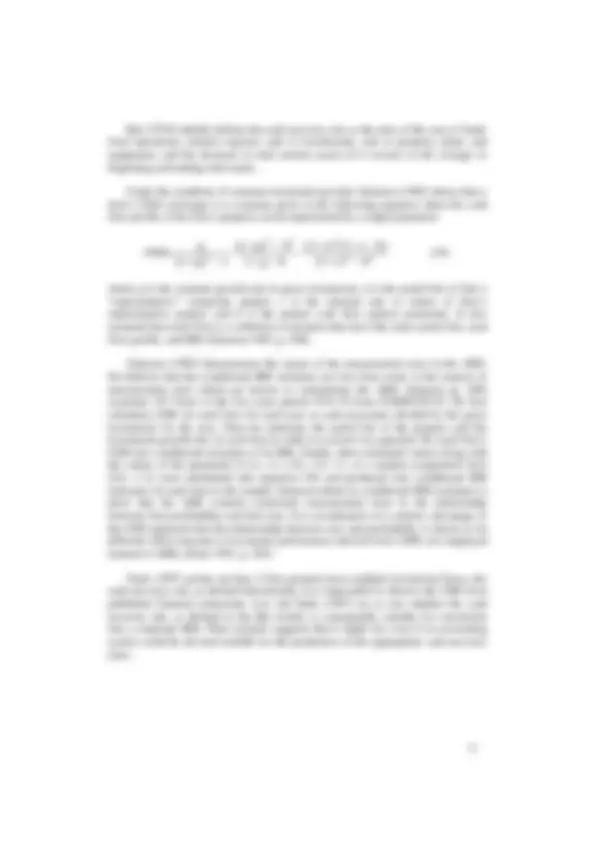
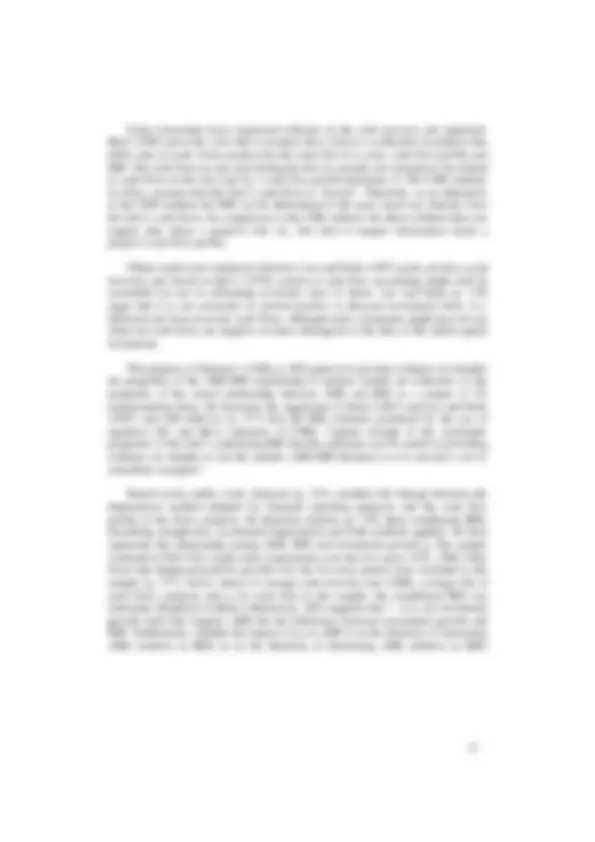
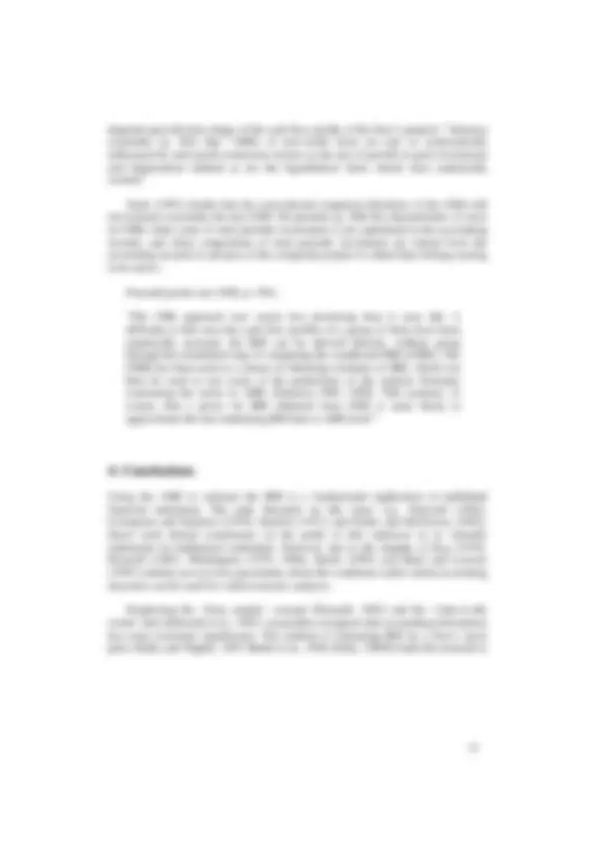

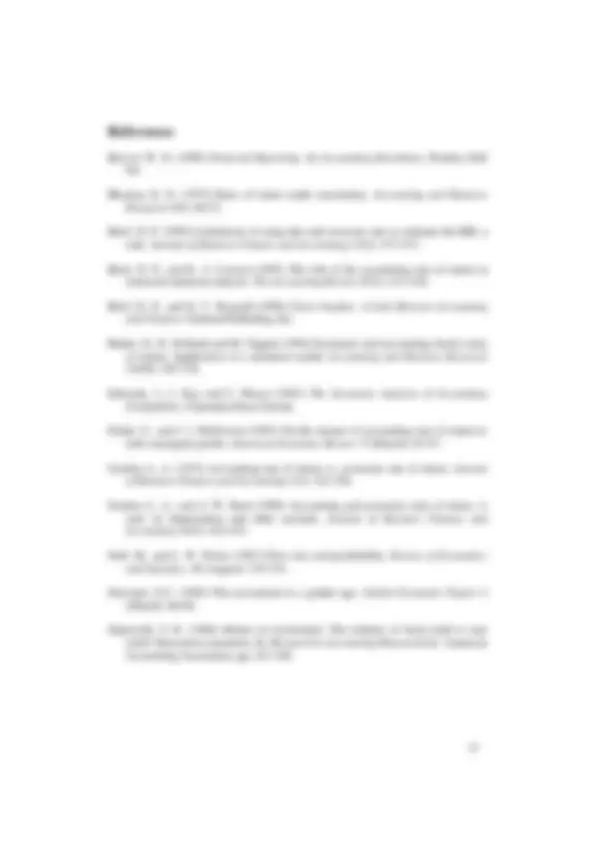
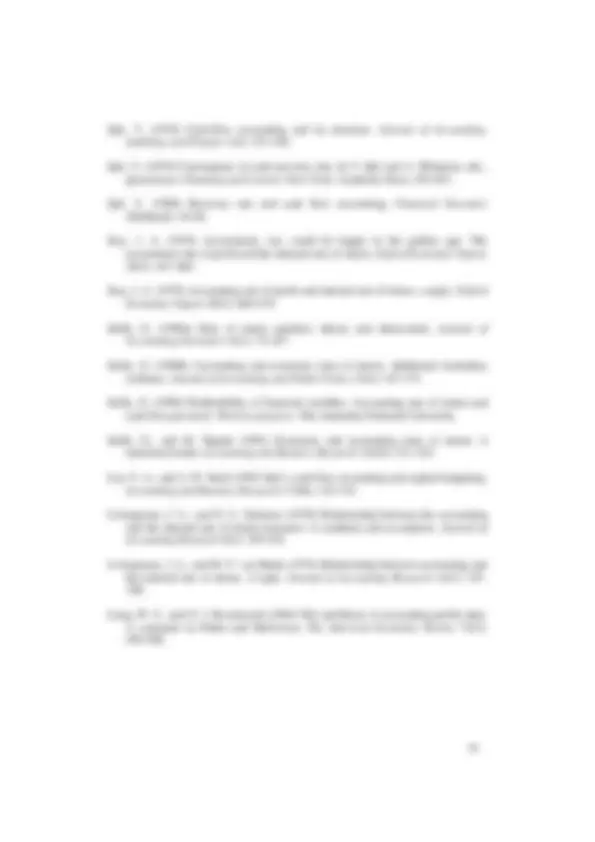

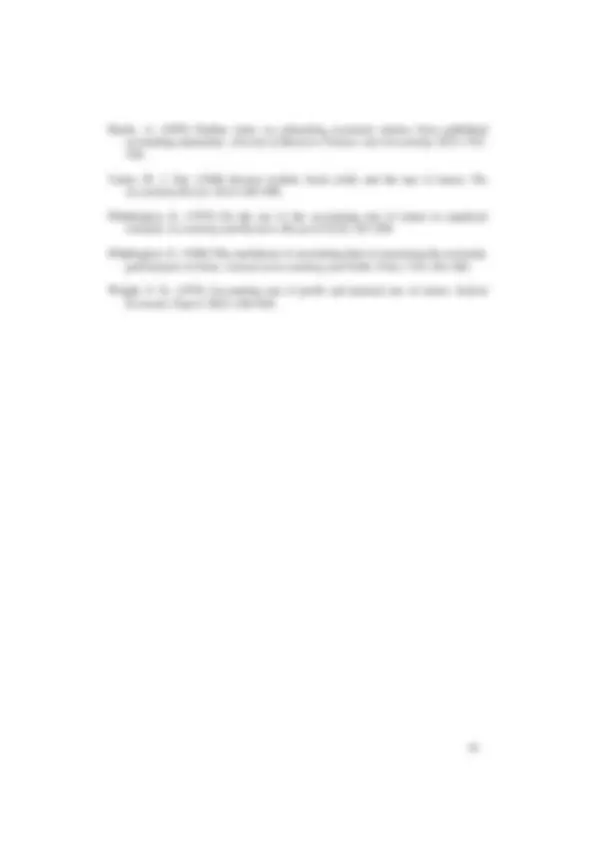


Study with the several resources on Docsity

Earn points by helping other students or get them with a premium plan


Prepare for your exams
Study with the several resources on Docsity

Earn points to download
Earn points by helping other students or get them with a premium plan
Community
Ask the community for help and clear up your study doubts
Discover the best universities in your country according to Docsity users
Free resources
Download our free guides on studying techniques, anxiety management strategies, and thesis advice from Docsity tutors
The relationship between Accounting Rate of Return (ARR) and Economic Rate of Return (IRR) through theoretical and empirical studies. Financial statement users often prefer ARR over IRR for assessing corporate performance, evaluating capital investment projects, and pricing financial claims. However, the accuracy and economic significance of ARR as compared to IRR have been a subject of debate. various definitions and relationships between ARR and IRR, and investigates the impact of factors such as cash flow patterns, machine lives, growth rates, and accounting policies on their differences.
Typology: Study notes
1 / 38

This page cannot be seen from the preview
Don't miss anything!































SOM-theme E Financial markets and institutions
First version: April 2000
This version: October 2000
∗ (^) D. W. Feenstra is a professor of Financial Accounting at the Faculty of Economics,
University of Groningen.** Hua Wang is a PhD student in Financial Accounting at the same institute. Corresponding to: Hua Wang, Department of Finance and Accounting, Faculty of Economics, University of Groningen, PO Box 800, NL-9700 AV Groningen, the Netherlands. Email: a.h.wang@eco.rug.nl
The rate of return on invested capital is a central concept in financial analysis. The purpose of calculating the rate of return on investment in general is to measure the financial performance, to assess the desirability of a project and to make decisions on the valuation of firms. Financial statement users make regular use of the accounting rate of return (ARR) rather than the economic rate of return (IRR) to assess the performance of corporations and public-sector enterprises, to evaluate capital investment projects, and to price financial claims such as shares. Since ARR measures are based on published accounting statements, there has been a long and sometimes heated debate as to whether such measures have any economic significance. This paper aims to provide a summary of the economic and accounting rates of return discussions in the literature. We analyze the concepts of ARR and IRR and explore possible relationships between them. We extend the previous studies in this line to provide more specific relations of IRR and ARR.
audited, too. ARR, based on accrual concepts and defined as a periodic variable, is considered to be a more pragmatic performance indicator. Vatter (1966, p. 682) points out that “ accounting measurements are ... the only basic sources of data which establish (however imperfectly) the income for a period, the amount of investment, and the bases of classification and matching which provide the rate of return currently being realized by operations or projects...”. ARR is then viewed as a proxy or surrogate for IRR in the various contexts where measures of, and comparisons involving IRR are deemed relevant.
Discretionary choice of accruals, constructed under generally accepted accounting principles (GAAP), include inventory valuation, depreciation, and foreign currency translation (Kelly, 1996a). Hall and Weiss (1967) note that there is a variety of reasons to believe that the profit data will tend to be understated, particularly in large and profitable firms; whilst managers of unprofitable firms, if concerned with retaining control, might well overstate profits. Managers thus possess much discretionary power under GAAP, regarding inventory valuation, depreciation, research and development costs, goodwill, etc. to capture different accounting realities, which yield measurement errors of ARR. Thus ARR in reality is a potentially noisy monitoring device for economic performance appraisals.
Since ARR measures are based on published financial statements, there has been a long and sometimes heated debate as to whether such measures have any economic significance^1. The debate began with the seminal papers of Harcourt (1965) and Solomon (1966). They discuss the relationship between ARR and IRR and the specific circumstances under which ARR equals to IRR. Fisher and McGowan’s paper (1983) has stimulated a most lively discussion on the subject. The findings of analytical work have generally been pessimistic. The early literature investigating the relationship between ARR and IRR models the problem of a firm investing in individual projects and a mix of projects under alternative assumptions about depreciation policy and growth^2. Researchers find that unless very strong assumptions are made the ARR is not an accurate measure of IRR, that there is no systematic pattern in the errors, and that the biases can be very large.
An important conceptual breakthrough was Kay’s (1976) discovery of an exact mathematical relationship between the economist’s IRR and ARR. The work that developed from Kay (1976), models the total cash flows of a firm as one project, then transforms the cash flows using the clean surplus accounting profits identity to discover a simple relationship between ARR and IRR. The IRR is found to be a
(^1) See, for example, Harcourt (1965), Solomon (1966), Kay (1976), Fisher and McGowan
2 (1983), Whittington (1988) and Peasnell (1982, 1996). See also in Livingston and Salamon (1970), Stauffer (1971), Gordon (1974), Fisher and McGowan (1983), and Long and Ravenscraft (1984).
weighted average of ARRs plus an error term that depends on opening and closing valuation differences. Whittington (1979) and Stark (1982) discuss the work of Kay (1976) and Peasnell (1982) extends the analytical model. Edwards, Kay and Mayer (1987) introduced the “value-to-the-owner” concept in this context and developed an economic analysis of accounting profitability. Further Brief and Lawson (1992) presented ARR as a key role to play in the valuation process.
An approach to estimate IRR from the firm’s stock price was introduced by Kelly and Tippett (1991). Butler, Holland and Tippett (1994) and Kelly (1996b) employ this method to investigate IRR-ARR relations. They find that ARR in general is not a good surrogate for IRR.
The cash recovery rate (CRR) method was developed by Ijiri (1978) and Salamon (1982) as an alternative way of using accounting information to derive the IRR. Salamon (1988) empirically estimates the conditional IRR and believed that the cash recovery rate (CRR) plays a more reliable role than ARR. Stark (1987), Lee and Stark (1987) and Gordon and Stark (1989) comment on these works.
This paper summarizes the literature about the IRR-ARR relationship, both analytical and empirical. The remainder of the paper is arranged as follows. The next section discusses the definitions of IRR and ARR used in the literature and investigates what kinds of IRR-ARR relations have been examined. Section three provides a summary of analytical and empirical research on the IRR-ARR relationship. It also discusses the cash recovery rate (CRR) to estimate the IRR. Finally, a brief conclusion is formulated in section four.
2. IRR and ARR: definitions and relations
Closely related to the measure of economic return is the measurement of the internal rate of return of a project, a firm or an industry. The economic value of an investment project equals the present value of cash flows expected from that project discounted at a rate given by the appropriate opportunity cost of capital. The economic, or internal rate of return (IRR) is usually defined as that discount rate which equates the present value of its expected cash flows stream to its initial outlay. This concept is central to economic investment theory, and is hence of great interest to economists (Luckett, 1984, p. 213).
Initial researchers usually assumed IRR as a constant rate calculated under certainty. Harcourt (1965, p. 68) asserts that the expected rate of profit in a ‘Golden Age’ is the internal rate of return – the rate of discount which makes the present value
According to IRR calculations relying on cash flow information, Butler, Holland and Tippett (1994) denoted cash flows given three kinds of definitions. The three cash flow definitions are (p. 307):
CF1 = net profit after tax, minority interests and preference dividend
CF2 = CF1 − change in inventory and work in progress; and
CF3 = CF2 − change in debtors + change in short-term provisions + change in creditors.
Butler et al. utilize the Kelly-Tippett method and applied the three definitions of cash flows to estimate IRR.
Peasnell (1996, p. 294) points out that these definitions of IRR differ from the normal view of the concept in two respects. That is, first, it is based on the current market value of the firm rather than the initial cost of the firm’s assets; and second, it refers to a (future) time interval that does not include the (past) period(s) from which the accounting data are drawn.
The accounting rate of return (ARR), calculated from the financial statements, is a periodic and an ex post indicator. Vatter (1966, p. 696) asserts that ARR is a figure based only on the data related to a given year, and has no reference to any other part of the project than that year to which it applies. ARR is usually defined as the ratio of accounting profit earned in a particular period to the book value of the capital employed in the period. According to the different numerators and denominators applied to calculate ARR, there are several kinds of definitions used in analysis. For the numerator of ARR, it is usually financial annual accounting profit or income, while the denominator is often determined by book value of assets or book value of equity.
Employing the ‘clean surplus’ concept, Peasnell (1982, p. 367) defines ARR as the ratio of the accounting profit to the book value of assets at the beginning of the period. The accounting profit was defined in ‘clean surplus’ terms, where accounting profit equals net dividends paid plus the change in the net book value of the firm’s assets during the period. He then shows (p. 369) that the constant ARR equals to IRR when there are no opening and closing valuation errors.
Average ARR calculation was developed by Kay (1976). Kay uses average ARR to overcome ‘creative’ accounting practices that may distort reported profits in the ‘short run’. The average ARR is the weighted average of the lifetime series of ARRs, with the weights obtained by discounting book values at IRR.
According to the use of average ARR, Peasnell (1982, p. 371) mentions that “the IRR is defined to be constant throughout the investment holding period whereas ARRs can and do vary through time. Perhaps the most obvious way of utilizing a time-series of ARRs in practice is to take a simple arithmetic average of them and to treat the result as a proxy for the (constant) IRR.”
Using the cash recovery rate (CRR) to estimate the internal rate of return of a firm was considered by Ijiri (1978 and 1979) and Salamon (1982 and 1985) and others. A major benefit claimed for the cash recovery rate (CRR) is that it is not vulnerable to the choice of accounting methods, while ARR is. Thus, the cash recovery rate (CRR) is seen as a useful alternative to the use of the accounting rate of return (ARR) to estimate the economic performance.
Ijiri (1978, p. 347) defines the cash recovery rate (CRR) as a ratio of the cash recoveries with the gross investment for the year. Cash recoveries are the sum of funds from operations, interest, proceeds from the disposal of long-term assets and the net decrease in total net current assets. Gross investment for each year was calculated as the average of beginning and ending total assets. Salamon (1982, 1985) extends Ijiri’s work, and believed that it enhances the possibility of using reported accounting data to derive meaningful discounted cash flow rates of return.
As Stark (1987, p. 10) points out, the key element of the cash recovery rate approach is the modeling of the process by which firms’ cash flows are generated, given a past sequence of investments. The approach assumes that all investments produce the same sequence of subsequent cash flows, adjusted for scale.
We will survey the scenarios of the relationship between IRR and ARR as follows^3 :
annual ARR versus ex post IRR,
average ARR versus ex post IRR,
average ARR versus ex ante IRR, and
(^3) Kelly’s paper (1996a) discussed the debate of prospective IRR versus realized ARR. We
extend his work by classifying the IRR-ARR relations in more detail.
where K denotes the capital value for the year; L denotes the number of machines in any age group and purchased in any year; r denotes the expected rate of profit (IRR);
i
n
=
1
, in which q (^) i represents the expected abnormal return in year i; Q *^ =
i
n
=
2
; S denotes the supply price of machine: S =
i i i
n
and S *^ =
i i i
n
Accounting profit was defined (p. 70) as:
A = L (Q − S) (3)
In this situation, ARR can be written as:
Harcourt shows that ARR in equation (4) is approximately equal to r (IRR). He demonstrates (p. 71) that if the accountant valued capital as the accounting’s average book value of capital for the year, then:
k =
where k is the accounting’s average book valuation of capital and n is the machine life duration. In this instance,
Harcourt observes (p. 71) that ARR in equation (6) is not generally equal to r. In the case of “one-hoss shay” (a constant cash flow stream), he finds (p. 71):
Given a balanced stock of identical machines, he points out (p. 71) that ARR will give different answers for two businesses that are alike in every respect except that the machines of one are longer-lived than those of the other. He also reports (pp. 72-
The results by Harcourt (1966) were hardly surprising when only considering the differences between accountant’s and economist’s views on asset valuations and depreciation calculations for income determination (Luckett, 1984, pp. 215-216). However, Harcourt asserts (p. 67) that ARR is influenced by the pattern of the quasi- rents associated with individual machines in a stock of capital, the method of accounting depreciation used, whether or not the stock of capital is growing, and by the type of assets included in the stock of capital.
Further studies have been made to investigate the relationship between IRR and ARR under specific limiting conditions. Solomon (1966) studies the relationship between the book-yield (ARR) on investment and the true yield (IRR) on investment for a firm that consists solely of projects with the same life and IRR. Solomon (p.
In the zero-growth case, Solomon (p. 240) concludes that the book-yield (ARR) is not an accurate measure of true yield (IRR) and that the measurement error in the book-yield is neither constant nor consistent. Specifically, he indicates four basic factors that affect the degree to which ARR deviates from IRR:
the balance sheet, the greater will be the overstatement.
n = the average productive life of assets,
w = the fraction of working capital to total capital,
l = the average time lag between the outlay for each asset and the commencement of net cash flows from its use,
c = the time pattern of cash inflows.
He finds (pp. 71-72) that the effects of accounting expensing policies on ARR are clearly powerful. He explains the reason for the higher-than-normal ARR for companies or industries is that they are either riskier, more efficient, or having monopoly powers. The fact that many high-book-rate companies or industries also follow high “expensing” policies suggests strongly that the observable ARR significantly overstates the underlying IRR actually being earned. Solomon (1970, p.
Similar to Solomon (1966), Solomon (1970) believes that ARR and IRR measures are not different estimates of the same thing but rather estimates of different things.
Following Harcourt (1965) and Solomon (1966), Livingstone and Salamon (1970) derive a relationship between ARR and IRR which depends on the length of the project (n), the project’s IRR (r), the pattern of cash flows associated with the projects (b), and the proportion of annual cash flows that are reinvested (c). Like the other studies cited, they also assume a constant IRR. Employing from Solomon (1966) as
ARR (^) t =
t t t
of period t.
They denote I 0 as the cost of an infinitely divisible asset which generates cash
benefits of Q 1 , Q 2 ,…, Q (^) n and represents the exogenous investment which is made
by the firm each year for n years. Thus, for years t such that t ≥ 2n, F (^) t =
0
t 1 i i 1
n − =
∑ ; D^ t =^
i 1
n − =
∑ ; and K^ t =^
i 1
n
=
∑. They undertake a
deterministic simulation analysis by substituting various values for the parameters in the model such that,
ARR (^) t = ∑
∑
=
−
−
n
i 1
ti
n n
ti
n n n
i 1
n i 1
One of the results shows (pp. 206-211) that ARR cycles symmetrically around a constant. The constant around which ARR cycles and the amplitude of the ARR cycle is affected by the model parameters n, r, b, and c. Particularly, the amplitude of the ARR cycle: (1) decreases as t increases for all values of n and IRR; (2) increases as n increases for any given IRR; (3) decreases as IRR increases for any given n.
Another result indicates (p. 212) that when the reinvestment rate equals one (c = 1, i.e., 100% reinvestment) then IRR ≈ ARR, regardless of the values of the remaining parameters. This result was shown by Solomon (1966) for the case of level project cash flows. Livingstone and Salamon apply it more generally for other project cash flows. They noted that there is a class of cases for which ARR is a good proxy for IRR.
McHugh (1976) examines Livingstone and Salamon’s model in a more analytic fashion and finds it to be not universally valid. He provides a mathematical proof of the results derived by Livingstone and Salamon and a questioning of some of their conclusions. McHugh (p. 183) analyzes the asymptotic form for the cash flow F (^) t and
shows the derivation relied on some results of matrix theory. He concludes that the asymptotic limit for ARR (^) t has been given an analytic form. He also finds that ARR
asymptotically approaches IRR in the long run.
Livingstone and Van Breda (1976) reply McHugh (1976) comments on Livingstone and Salamon’s model. Livingstone and Van Breda (1976) then discuss McHugh’s criticisms by using standard difference equation methodology. They show (p. 188) that the solution to the cyclical damping effect only “...permits an analytical relationship to be established when n → ∞”. They argue that McHugh’s criticisms were unwarranted, “since Livingstone and Salamon specifically avoided any claim of generality for the findings in question”.
where r represents IRR which is defined analytically as the values of r for which
N (^) − ∫ 0 = 1 or^ K i^ i^ r^
i i
N
=
∑ 1
= 1. Thus, if K(t) is given, D(t) is uniquely
specified. Otherwise, if K(t) and D(t) are not related to each other as stipulated by the equation, the ARR will in general diverge from the IRR.
Stauffer achieves a general synthesis of IRR and ARR relationships as described in the bulk of the literature analyzed. In particular, he makes clear the direct and indirect roles which growth plays in generating measurement error in ARR. He (p.
Bhaskar (1972) regresses 1,000 IRR observations against those for ARR to ascertain functional relationships between the two indicators. He proposes the following regression model:
states his results (p. 49) that as the degree of riskiness increased from experiment one to three, the intercepts of the regression equations approached zero, the slopes approached one, the correlation coefficients were higher, and the standard error of estimate decreased. He concludes (p. 51) that ARR asymptotically approaches IRR in more uncertain environments, and that the results of the straight-line method of depreciation were always dominated by the annuity method.
Gordon (1974) investigates some special cases for analytical differences between realized ARR and IRR measures. Gordon believes (p. 345) that the components of the traditional ARR can be useful in approximating the true IRR. He notes (p. 352) that although ARR in general is not a good measure of the IRR, supplementary information can be generated by an enlightened accounting profession that will greatly enhance the usefulness of the components of the ARR for approximating the IRR.
Consistent with Solomon (1970), Livingstone and Salamon (1970) and Stauffer (1971), Gordon confirms (pp. 348-349) that where the growth rate equals the internal rate of return and there is 100% reinvestment of cash flows, ARR will be on average approximately equal to IRR over the long-run. He shows that Livingstone and Salamon’s (1970) case where the reinvestment rate equals 100% is a special case of
Stauffer’s (1971) case where the growth rate equals the IRR. He observes (p. 353) that income determination and valuations of assets are the heart of the disparities between ARR and IRR. He concludes (p. 349) that “...the major underlying conditions, for the ARR of any particular period to be a meaningful approximate of the IRR are that the accountant’s income and asset valuations must approximate the economic income and economic asset values.”
It is a sufficient justification that IRR be a desired measure, in which case it would be useful to have a conversion formula from the (usually available) ARR to the (usually not available) IRR (Livingstone and Salamon, 1970, p. 214).
The work by Livingstone and Salamon (1970), Stauffer (1971) and Gordon (1974) extends the earlier work of Harcourt (1965) and Solomon (1966). The important generalizations for ARR that best approximate IRR are two situations: first, for a firm in steady state growth at a rate g which equals IRR and second, ARR be measured net of depreciation. Otherwise, the findings of initial analytical work on IRR-ARR relation have generally been pessimistic. However, Gordon (1974) shows that the discrepancies between ARR and IRR are minimized if the accountant chooses a depreciation method that approximates the economic depreciation implicit in IRR.
Fisher and McGowan (1983, p. 84) reassert that the depreciation schedules affecting ARR differ from year to year and make the ARR does not equal IRR in general. They comment (p. 82) that the accountants view on depreciations may differ from economically acceptable definitions so that ARR provide almost no information about IRR. Fisher and McGowan develop an analytic model and showed that ARR is influenced by accounting methods, investment growth rates, and project cash flow profiles. They find (p. 84 and footnote 11) that if ARR is higher than the growth rate, then IRR is also higher than the growth rate; if ARR is lower than the growth rate, then IRR is lower than the growth rate; if ARR equals the growth rate, IRR equals to ARR (while ARR calculated on beginning-of-year total assets). They conclude (p. 90) that there is no way in which one can look at accounting rates of return and infer anything about relative economic profitability. This result is criticized by further studies, such as Long and Ravenscraft (1984).
Long and Ravenscraft (1984) have explicitly criticized the work of Fisher and MacGowan and, thus, implicitly criticized all of the analytic studies about the ARR- IRR relationship. Long and Ravenscraft (1984, p. 497) believe that it is inappropriate to draw conclusions about the relationship between the ARR and the IRR in empirical settings based upon the nature of the relationship in the highly simplified, hypothetical, and, perhaps, unrepresentative “examples” which are presented in the analytical studies.
accounting profits does on average, yield important insights into economic performance.
Kay (1976) develops a continuous time mathematical model to focus on the relationship between the internal and accounting rates of return over a finite time. He models (p. 449) under the condition of balanced growth a t-year-old machine that generates cash flows at a rate f(t) and requires expenditures at a rate g(t). Accountants depreciate it at a rate d(t), so that its book value at t will be,
t ∫^ − 0
The accountant’s rate of profit a(t) is defined as,
a(t) =
The internal rate of return r is defined by the equation:
∞ ∫ 0 =^ g t e^ dt
∫ 0 (16)
If a(t) is constant and equal to a, then f(t) = av(t) + d(t) and so
∞ ∫ 0 dt =^ av t e^ dt^ d t e^ dt
∫ 0 +∫ 0 (17)
where v(0) = 0, since t = 0 is the instant before the first expenditure on the machine is
∞ ∞ ∫ =∫
and v(t) → 0 as t → ∞; and since v
∞ ∫ 0 dt =^ g t e^
∫ 0 dt^ (18)
comparing equation (18) with equation (16), we get a = r, and thus ARR = IRR. Kay noted (p. 449) that this result makes no assumptions about the shape of the f, g, and d schedules. In this case the ARR is not a misleading indicator.
Kay further states (pp. 451-452) that if a is the average ARR and if the value of capital employed is a or r, the weighted average ARR is equal to the IRR. More formally, if
a =
z at
z at
−
−
∫
∫
0
0
z 0
0
z (^) − ∫ , and hence a = r.
Kay also models (pp. 454-456) a firm in steady state growth for which the ARR is constant and the book value of capital grows at rate n. If W is the economist’s valuation of the firm, and V is that of the accountant, he develops the model which yields the relations as
(n - r)W = (n - a)V (20)
so that in special cases where n = r or W = V, then a = r. He concludes (p. 459) that if ARR is measured over a number of years, it will be an acceptable indicator of the true rate of return; if it is measured over a single year than it may prove seriously misleading.
Wright (1978) doubts about some technical points and statements on Kay (1976), while Kay (1978) gives him a reply afterwards. Wright agrees (p. 466) that over the entire life of an investment, the accounting rates of return must average out (with suitable weights) to the internal rate of return. However, Wright believes that the distortions need not be equal and opposite, i.e., the weighting of the average permits a few years of low ARR early in the life of the investment to offset an indefinitely large number of years of high ARR later, and vice versa. He thus concludes (pp. 466-468) that ARR can be over- or understated for an indefinitely long period that is still at the user’s peril.
Kay (1978) replies that Wright emphasizes the difficulties of the intermediate case. Kay states (p. 469) that while IRR is equal to the weighted average of ARRs when there is a complete sequence of accounting information, substantial difficulties arise in attempting to estimate IRR when there is incomplete data in the absence of a plausible belief that ARR is constant. He thus confirms (p. 470) that if the value of